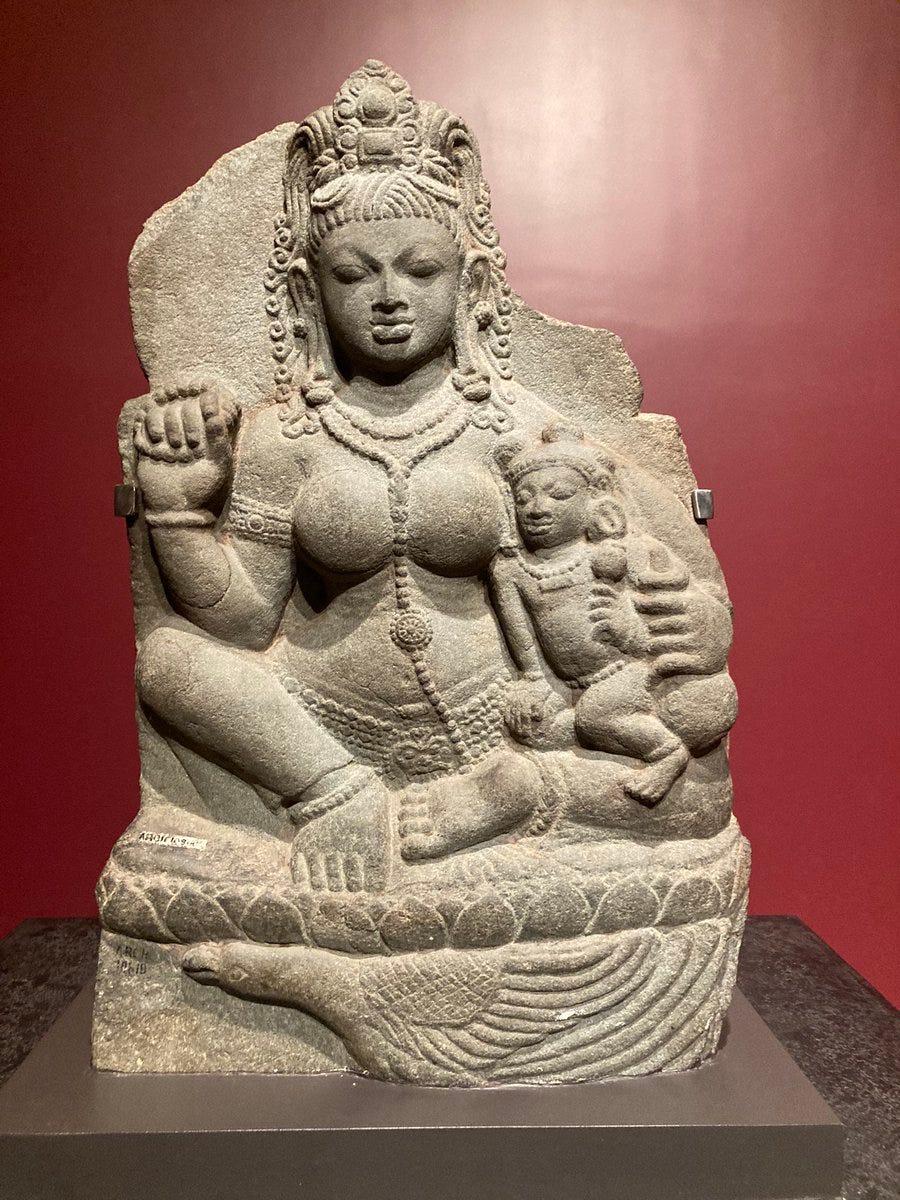Unveiling History: Bihar's Ancient Goddesses
Bihar and Uttar Pradesh currently have some of the lowest urban female labour force rates in the world. This is because male honour rests on female seclusion. Other social scientists may attribute this to geography, plough technology, state-formation, or colonialism. But I’m unconvinced. In this very same environment, statues previously showed goddesses as powerful protectors.
Can mythology tell us anything about historical gender relations? Well, we should be extremely cautious. Present artefacts are subject to survival bias: violent conquerors frequently obliterate remnants of alien religions. Sacred shrines may have razed by invading armies, destroying alternative ideologies. Moreover, even when we look into the past, the dearth of written records makes it impossible to understand their true meaning or significance. And just like the Ancient Greeks, goddesses may have just lived a fantastical life, unavailable to mortal women.
But it is noteworthy that
Statues from Bihar and Uttar Pradesh showed deities as weaponised protectors;
Representations of goddesses were remarkably similar until the 14th century
After Islamic rule, paintings adopted ideals of purdah (even for Hindu goddesses).
How do we know? Well, the museum of Bihar has a fabulous exhibit on women deities! This is a perfect reminder that the Great Gender Divergence is not due to ancestral crop systems, plough technology, or state-formation, but CONQUEST.
Didarganj Yakshi
Didarganj Yakshi is two thousand years old. She is my height and magnificently carved from a single piece of sandstone. Found near Patna (Bihar), where she stands proud!
6th Century
These statues have been dated to the 6th century, Jharkhand. These maternal goddesses are weaponised protectors, armed with swords.
This deity cradles her infant while brandishing human skulls.
More 6th century goddesses from Jharkhand, semi-naked in maternal roles.
8th-10th Centuries
Back in the 1970s, feminists archaeologists and anthropologists speculated that patriarchy emerged with the rise of states. But in tracing cultural representations over time, I did not observe any such rupture.
The Pala Empire was technologically advanced, with a bureaucracy, taxation, and several universities, yet its spiritual art was remarkably similar to earlier periods. Amid the rise of states, naked, violent female protectors continued to be spiritually revered in both Buddhism and Hinduism.
Behold: terrifying Durga and Kali goddess statues from Uttar Pradesh and Bihar in the 8th, 9th, 10th centuries 👇
This particular statue is quite incredible. She appears raging, ferocious, potbellied, unashamed by her naked sexuality, and she is celebrated. I cannot think of another example like this in the world?
This goddess appears to be physically crushing two bodies. Pow!
Tara is both the Buddhist and Hindu goddess of protection. She towers above smaller worshippers. These statues are both from Medieval Bihar.
At least until 14th Century, we observe strong cultural persistence in representation: goddesses are shown virtually naked with bulbous breasts. They are also powerful and militant!
Hariti is a Buddhist goddess, protector of children. Female worshippers crouch at her feet. This is 10th century, Bihar
Durga, weapon in each arm, rides a lion/ tiger (Dawon). Carved in black stone. This is from Medieval Bihar
Slaying, quite literally. She has a weapon in each arm. Varanasi, 9th century.
Before the 14th century, goddesses were usually depicted topless. Highly prominent nipples. Here is Sridevi
Today, if you Google “sridevi goddess”, the images are much more demure.
Compare these 14th and 21st century depictions of Ganga
In this 11th century sculpture, Pavarti protectes her child while armed with a sword and shield.
Yet in contemporary representations, Pavarti is not necessarily armed. She seems much softer…?
Bronzes
From this great collection, there seems to be strong continuity in cultural representations of deities from 2nd century BCE to at least until 14th century CE.
Conquest
From Bihar’s fantastic great collection, there seems to be strong continuity in cultural representations of deities from 2nd century BCE to at least until 14th century CE. Goddesses are repeated shown as sexual, semi-nude, and militant protectors.
Yet, as I discovered when manually analysing 10,000 images of Indian art, I observed a marked junction upon conquest. Mughal miniatures showed women in purdah.
Art is not conclusive proof - it is only a fragment of a jigsaw. But this evidence of cultural persistence and then disruption upon conquest pours cold water onto alternative theories about the plough, property rights and state-formation.
Conquest appears far more catalytic.
































